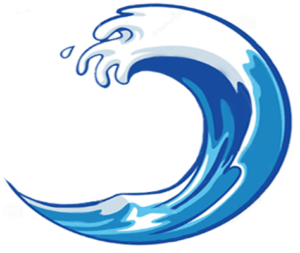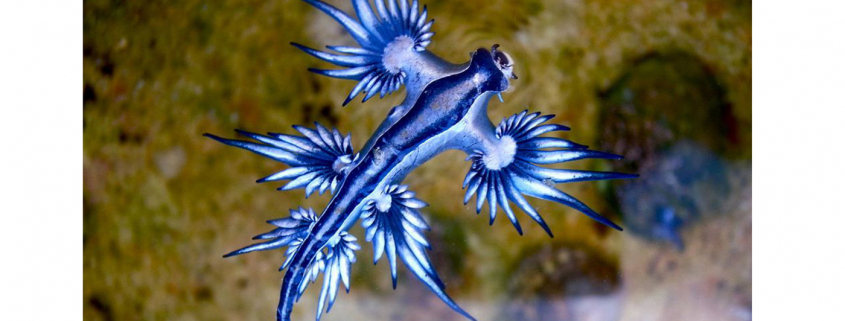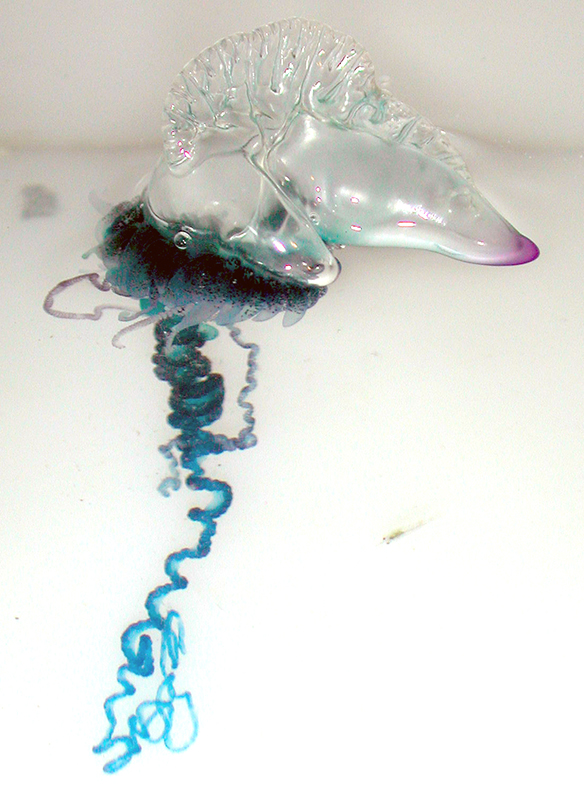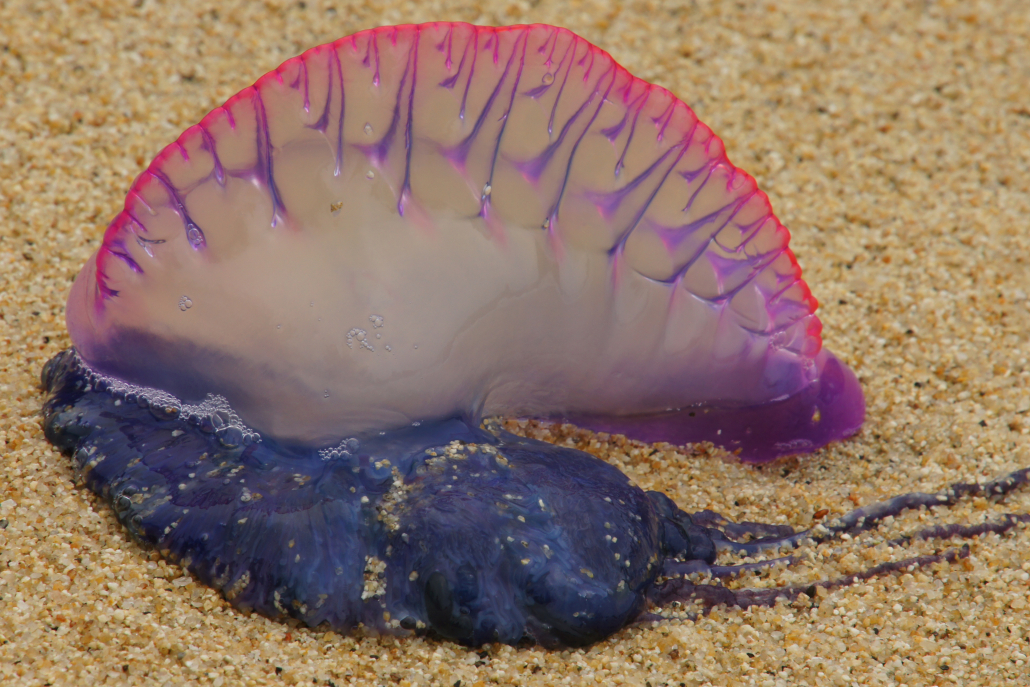By Cole Quinton
Grab your magnifying glass, your snorkel and start regulating those oxygen tanks as we dive into the open ocean and explore the world of the Glaucus atlanticus where we meet the little beauty that is the world’s only underwater dragon. If you are in the middle of the Atlantic, Pacific or Indian ocean and you have an extremely efficient magnifying glass and calm waters, then you may be lucky enough to spot a Blue Dragon floating along the surface or nearby with the help of the air bubble it has stored in its stomach, or if you are a beach goer then you may be unlucky enough to run into a “blue fleet” (a group of Blue Dragons which were taken ashore shore). How do you know what a Blue Dragon looks like? It has a silvery grey colour on its dorsal side facing the waters below because it floats upside down to blend in with the light from the sea surface, concealing it from predators below (Loggerhead sea turtles being the only known marine predator). The Blue Dragon is dark and pale blue on its ventral side with blue stripes on its head, they use the blue colour of the ocean to camouflage into their surroundings. It has a flat, tapering body and 6 appendages that branch out into rayed, finger like cerata, and is only a miniscule 3 cm in length.
Though the Blue Dragon lacks in stature it is not something to take lightly, they take on fearsome beasts of the sea, like a mighty Man of War (a strange creature that looks like a jellyfish but actually belongs to the siphonophores) and other creatures such as blue bottle jellyfish, and some Blue Dragons have even been documented to be cannibalistic, but only when faced with an injured or recently deceased fellow Blue Dragon. To appreciate the Blue Dragon’s defence we need to first understand the defence of the creatures that it feeds on, the Man of war, one of the oceans creatures with one of the most painful and deadly stings, uses cnidocytes that are cells that shoot off threadlike, often toxic, tubule inside the cnidocyst. When the Blue Dragon eats its venomous prey they don’t completely digest them, they keep the stinging cells (nematocysts) and store them in the tips of their cerata to use as a defence tool. If you’ve heard of the power of the sting that the Man of War posses, this could be enough to send shivers down your spine every time you hear their name. The Blue dragons are able to concentrate the nematocysts and unfired cnidocytes along with the jellyfish tissue which makes the sting far more potent than the Man of War’s.
You must be wondering how more of these bad boys get made, well they are hermaphroditic, and they cannot fertilize their own eggs so there is no time to be antisocial because they must find a mate to reproduce with. Our small, blue, friends produce eggs in long, spiral shaped egg strings that float freely in the water or stick to surfaces, but typically they lay their eggs in their prays dead carcasses. So, would you like to go swimming with these beautiful blue devils? Well guess what? If you’ve ever swam in the Atlantic or Pacific ocean you have, congratulations!
Sources:
Heimbuch, J. (February 16, 2017). 3 fascinating facts about the blue dragons of the sea. Mother Nature Network. Retrieved November 27th, 2019 from https://www.mnn.com/earth-matters/animals/blogs/3-fascinating-facts-about-blue-dragons-sea
Hines, N. (June 19, 2018). Meet the blue dragon, the world’s most beautiful – and deadly – slug. Allthatsinteresting. Retrieved November 27th, 2019 from
https://allthatsinteresting.com/glaucus-atlanticus
Kelly,A. & Olson,E. (August 7, 2014). Featured creature: Blue Dragon. PBS Nature. Retrieved January 10th, 2020 from
https://www.pbs.org/wnet/nature/blog/inside-nature-featured-creature-blue-dragon/
Photo at top taken by : Sylke Rohrlach at March 3, 2013
Photo was taken at Bronte Beach, Sydney, NSW
https://commons.wikimedia.org/wiki/File:Blue_dragon-glaucus_atlanticus_(8599051974).jpg
Photo at bottom by : Biusch
Photo was taken at Tayrona national park, Colombia
https://commons.wikimedia.org/wiki/File:Physalia_physalis,_Tayrona_national_park,_Colombia.jpg







Leave a Reply
Want to join the discussion?Feel free to contribute!